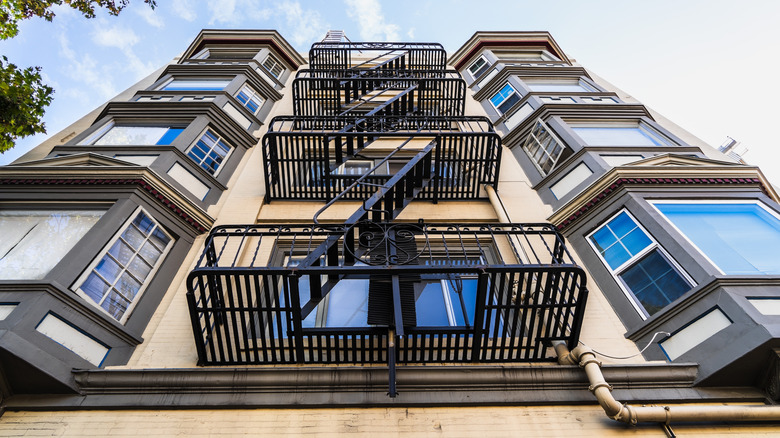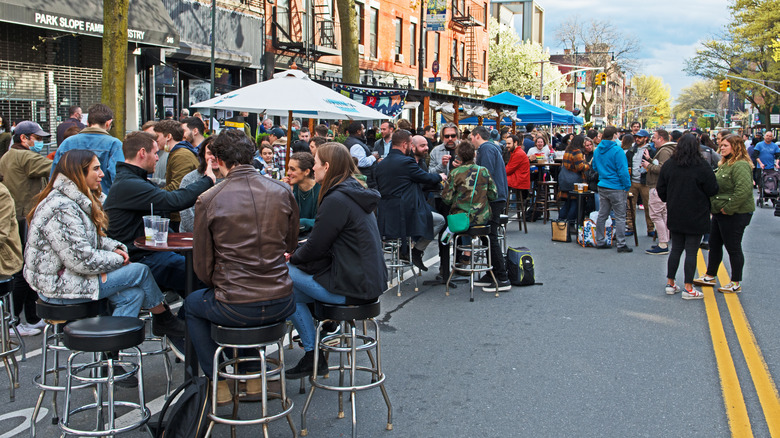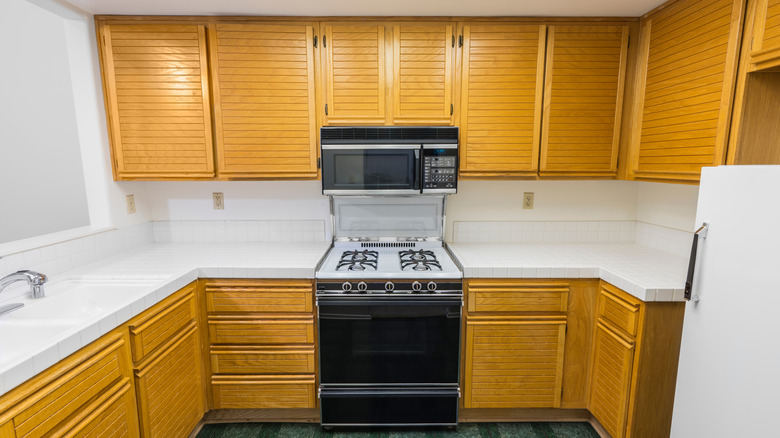The Benefits (And Drawbacks) Of Living In A 'Rent Stabilized' Apartment
Rent affordability has served as a national topic of conversation for more than a decade, and even more so in the aftermath of the pandemic beginning three years ago. Rent prices across the country have seen significant hikes over the past several years, with the average year-over-year price increase in the United States reaching 14% in 2022. Renters from coast to coast anticipate receiving the dreaded typed notice from their landlord warning them of an upcoming increase, ultimately leaving them with two courses of action: forking over more pay each month or moving in search of a cheaper place to live. Local governments have experimented with policies intended to solve the country's impending rental crisis, and one appears to gain traction as the situation worsens: rent regulation.
Rent-stabilized apartments are residential units with limitations placed on how much landlords can raise prices in between their tenants' lease renewals. Rent stabilization is one of the most common forms of rent regulation, along with rent control – a similar concept. Though rent regulation is most commonly seen in major U.S. cities like New York and Los Angeles, smaller cities in some states are beginning to implement their own versions of rent control and stabilization to help reverse the effects of the housing affordability crisis and prevent low- and middle-income tenants from becoming displaced from their communities entirely. But how do these limitations positively or negatively impact renters? Here are some benefits and drawbacks to living inside a rent-stabilized apartment unit.
The pros
Rent stabilization is perhaps most beneficial for tenants in terms of keeping housing costs affordable for renters on a budget. In fact, rent stabilization was originally created to help low- and middle-income workers in pricey metropolitan areas afford rent without having to sacrifice a majority of their earnings each month or abandon their neighborhoods altogether. With tenants dedicating smaller fractions of their income to rental costs, they are able to focus on paying other bills and debts each month, allowing them to better tackle their finances and fend off worries of potential eviction. Certain laws also prevent landlords from evicting renters "without cause," as landlords are obliged to automatically renew the leases of rent-controlled tenants each year.
Rent stabilization also keeps neighborhoods diverse and people-friendly, allowing residents to establish roots in their communities and create identities they can pass along to future generations. By placing renters in a position to renew leases more frequently and reside in their beloved neighborhoods for longer periods of time, communities are allowed to develop their own distinct cultures and flavors. Stable housing also helps individual businesses and local economies flourish as it expands and strengthens job markets and allows more money to pour into the community.
Drawbacks of rent stabilization
While rent stabilization appears to be a great deal for renters initially, there are some downsides related to the process that may go unnoticed. First, as rent hikes are capped by the government, landlords are left with less liquidity to keep their units updated and inhabitable. This makes for a stressful situation for landlords with no other streams of income to fall back on. Tenants are less likely to have repairs addressed in a timely manner when living in rent-stabilized apartments, which can prove detrimental to renters' health, given a majority of rent-stabilized units are located in older buildings subject to poor ventilation, mold, or asbestos.
Some landlords will even go as far as to convert rent-stabilized apartments into condominiums instead in order to bypass the restrictions that come with leasing these units. These conversions ultimately reduce the number of available units for renters even further, giving market-rate apartment units a motive to increase rents by an even higher percentage.
With rent-stabilized apartments in such high demand, it can be especially difficult for outsiders looking in to find a unit that suits them. The most foolproof way to guarantee a tenant an apartment is to pass the unit down to a descendant. The exclusivity of rent-stabilized apartments also makes it challenging for renters to move, despite their housing needs changing as they grow older. A rent-stabilized tenant may avoid downsizing to a smaller space following retirement, for example, in order to hold onto the space for their kids.


